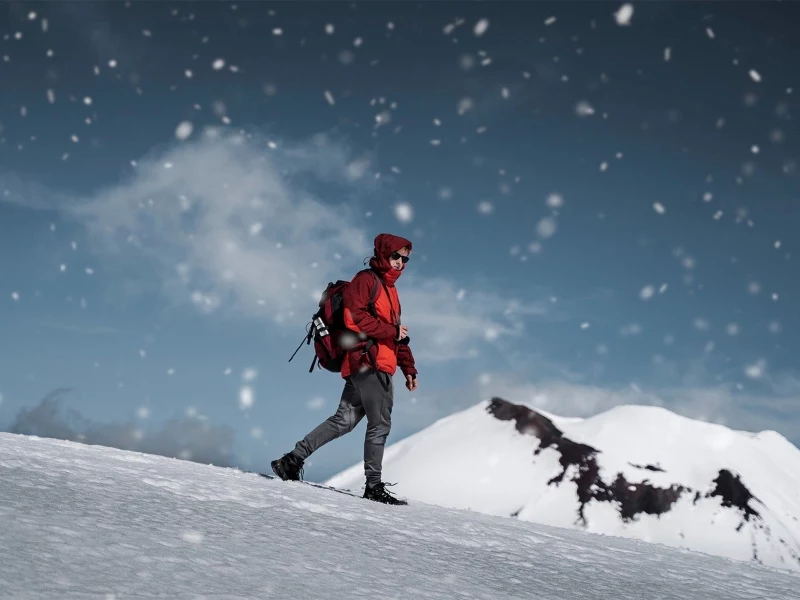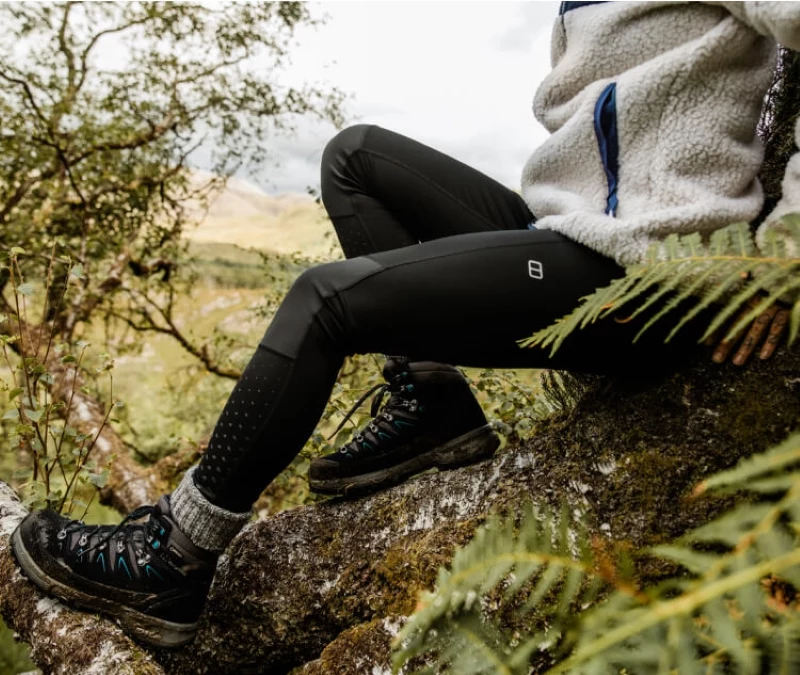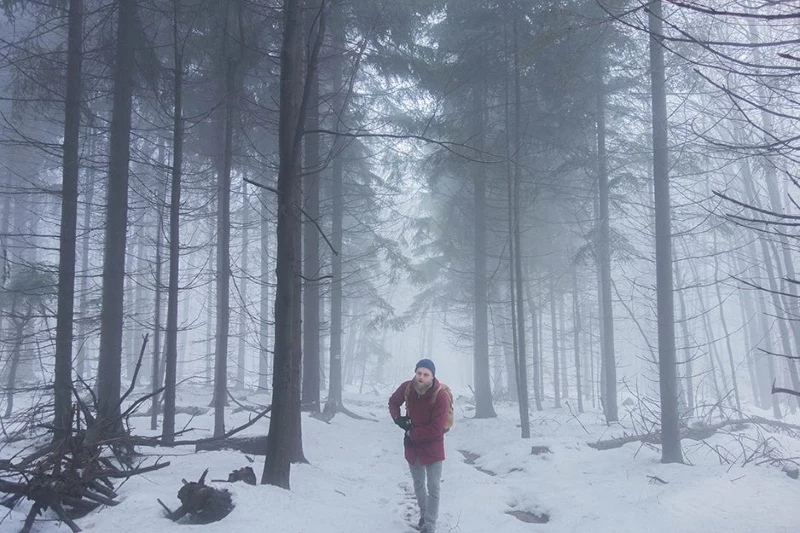Stop Being Cold: The Real-Deal Guide to Thermal Base Layers
I learned the true value of a good base layer the hard way, and it’s a lesson that has stuck with me for my entire career. Picture this: a sharp November morning on a forestry block way up north. Snow’s coming down, and I’m young and clueless, thinking a thick jacket over a plain cotton t-shirt is all I need. Yeah, right.
In this article
A few hours of running a chainsaw and hauling brush, and I was completely soaked in sweat. The moment we stopped for lunch, my body temperature took a nosedive. That wet cotton felt like a sheet of ice against my skin, and I started shivering so hard I couldn’t stop. My crew lead saw me, knew exactly what was happening—early-stage hypothermia—and made me swap my wet shirt for his spare merino wool top. The difference was instant. It was life-changing, honestly.
That day taught me something fundamental: your entire system for staying warm and safe in the cold starts with what you wear right against your skin. It’s not just clothing; it’s a critical piece of gear.

So, How Do They Actually Work? (Hint: It’s Not Magic)
A lot of people think thermal underwear magically creates heat. Nope. Your body is the furnace. A base layer’s real job is to manage the heat and, more importantly, the moisture your body produces.
Think about it. When you work or even just walk briskly, you sweat. That sweat evaporating is what cools you down, which is great in July but dangerous in January. Water pulls heat away from your body about 25 times faster than air does. A wet layer of clothing is like opening a window in a blizzard—all your precious body heat just rushes out.
A proper base layer does two things brilliantly:
- It Wicks Moisture: Wicking is just a fancy word for pulling sweat away from your skin and pushing it to the outer surface of the fabric where it can evaporate. This keeps your skin drier, which means you stay warmer.
- It Insulates: The fabric itself traps a thin layer of air right next to your body. Your body heat warms up that trapped air, creating a nice, toasty buffer against the cold.

The #1 Rule: Just Say No to Cotton
This brings us to the most important rule in outdoor clothing, one that search and rescue folks repeat for a reason: “Cotton Kills.” It’s not an exaggeration. Cotton is a water-loving fabric; it can absorb a ridiculous amount of moisture. Once it’s wet from sweat or rain, it loses all its insulating power, sticks to you, and actively sucks the warmth right out of you. That icy feeling I had? That was cotton doing its worst.
Breaking Down the Materials: What to Actually Buy
Walking into an outdoor store can feel overwhelming. There’s a whole wall of black and grey shirts with fancy names. Let’s cut through the noise. After years of testing pretty much everything on the market, it really comes down to a few key choices.
Merino Wool: The Natural Wonder
First off, this is NOT your grandpa’s scratchy, old-school wool. Modern merino wool is made from incredibly fine, soft fibers that feel great against the skin. It’s my personal go-to for most situations.

The biggest benefit of wool is that it still keeps you warm even when it’s damp. It can absorb a lot of moisture before it even feels wet to the touch. The other huge plus is its natural resistance to odor. To be frank, I’ve worn the same merino shirt for a week straight in the backcountry, and while it wasn’t exactly fresh, it didn’t smell like a science experiment—which is more than I can say for some synthetics! The downsides? It’s pricey, often running between $90 and $140 for a quality top from brands like Icebreaker or Smartwool. It also dries a bit slower than synthetics and isn’t quite as tough; I’ve definitely snagged a few on sharp branches.
Synthetics (Polyester & Polypropylene): The Tough Workhorse
Synthetic base layers are the backbone of many outdoor pros’ gear closets for good reason. They are absolute champions at wicking moisture. They’re hydrophobic (water-hating), so they absorb almost no water and dry incredibly fast. This makes them perfect for really high-sweat activities like winter running or ski touring. They’re also super durable and more affordable, typically in the $50 to $80 range from reliable brands like Patagonia (their Capilene line) or REI’s house brand.

The main drawback? The smell. Oh, the smell. Even with modern antibacterial treatments, they can get funky. I once had a polyester shirt get so bad on a multi-day trip that my friends made me quarantine it in its own separate dry bag. It’s a real thing.
Blends: The Best of Both Worlds?
A lot of companies now offer merino/synthetic blends. The goal is to give you the odor resistance and warmth-when-wet of wool, plus the durability and quick-dry speed of synthetics. In my experience, these are an excellent compromise and can be a fantastic all-around choice, especially if you can only spring for one high-quality set.
A Quick Word on Silk
You’ll sometimes see silk thermals marketed as a luxury option. It feels nice, sure, and it’s very lightweight. But honestly, it’s not a serious contender for active use. It offers poor insulation once it gets wet and isn’t very durable. Think of it as something for a chilly office or a low-key day, not for the trail.

Getting the Details Right: Fit and Weight Matter
Choosing the right material is just step one. How your gear fits and how thick it is are just as important for staying comfortable.
Why Fit is So Critical
For a base layer to do its job, it has to be in contact with your skin. That means you want a snug, athletic fit—not loose and baggy. If there are big air gaps, sweat just pools on your skin and you’ll get cold. But it shouldn’t be compression-tight either, as that can restrict blood flow.
Quick Tip: The Dressing Room Test. When you try one on, do these two things:
- Raise your arms straight above your head. Does the hem lift way up, exposing your stomach? It’s too short.
- Twist your torso from side to side. Does it feel like it’s pulling or restricting you? It’s too tight. You’re looking for a snug hug, not a squeeze.

Decoding Fabric Weights (g/m²)
You’ll see different weights, and it’s not just marketing. You’ll often see a number on the tag like “150 g/m²” or “250.” This just refers to the grams per square meter—a simple measure of fabric density. Here’s a simple breakdown:
- Lightweight (around 150 g/m²): This is your thinnest option, best for cool days or high-output activities like cross-country skiing. The goal here is moving sweat, not maximum warmth.
- Midweight (around 200-260 g/m²): The versatile all-star. This is the sweet spot for most winter activities, from resort skiing to hiking. If you’re only going to buy one set, make it a midweight.
- Heavyweight (260+ g/m²): This is for the seriously cold days, especially when you’re not moving much. Think ice fishing, late-season hunting from a blind, or operating machinery in the dead of winter. It’s super warm but doesn’t breathe as well, so you can overheat easily if you start working hard.
Don’t Forget Your Legs!
It’s easy to focus on tops, but thermal bottoms are just as crucial. Your legs contain the largest muscles in your body, and they generate a ton of heat and sweat. Keeping them dry and insulated is key to regulating your overall body temperature. All the same rules about material, fit, and weight apply to your pants, too.
If You Can Only Buy One Thing to Start…
For beginners looking to make that first smart purchase, here’s my advice: get a midweight merino wool long-sleeve top. It’s the most versatile piece of gear you’ll own. It works in a huge range of conditions and will last you for years. If the $100+ price tag is too steep, a quality midweight synthetic top is the next best thing and a solid starting point.
The Full System: Base, Mid, and Shell
Remember, your base layer is just the foundation. The real magic comes from the classic three-layer system.
- Base Layer: Your second skin for moisture management. (We’ve got this covered!)
- Mid-Layer: Your insulation. This traps your body heat. Think fleece jackets, a puffy down vest, or a synthetic-fill jacket.
- Shell Layer: Your shield. This blocks wind, rain, and snow. A good waterproof or water-resistant jacket is essential.
The beauty of this system is that you can adapt on the fly. Getting too warm on a climb? A lesser-known trick is to just unzip your mid-layer or even your base layer if it has a zip-neck. Quarter-zip tops are fantastic for this, giving you an easy way to vent heat without having to stop and de-layer completely. Oh yeah, and thumb loops on the sleeves? They aren’t just for looks—they’re amazing for keeping your sleeves in place when you pull on your next layer. It’s the little things!
A good rule of thumb we always used is, “Be bold, start cold.” It’s better to feel a little chilly for the first ten minutes of an activity than to start out overdressed and be sweating buckets a few minutes later.
Final Word: This is About Safety, Not Just Comfort
Alright, so you’ve invested in some good gear. You’ve spent maybe $70 on a synthetic set or splurged on a $200 merino outfit. How do you protect that investment? Always check the tag, but generally: wash in cool water, use a gentle detergent, and NEVER use fabric softener—it clogs the fabric and ruins its wicking ability. Hang it to dry if you can.
At the end of the day, choosing the right thermal gear is a fundamental part of your safety system. Getting it wrong can lead to hypothermia, which is serious business. Learn to recognize the early warning signs—the “umbles”: fumbling, mumbling, stumbling, and grumbling. If you see this in yourself or a partner, it’s time to stop and get warm and dry immediately.
Use this guide as your foundation, but always pair your gear with good judgment. Check the forecast, tell someone your plan, and never be too proud to turn back if conditions get sketchy. Stay warm out there.
Inspirational Gallery
Merino Wool: Sourced from merino sheep, this natural fiber is incredibly soft, breathes well, and has an almost magical ability to resist odors, even after days of wear. It keeps you warm even when damp. Ideal for multi-day treks or variable conditions. Look to brands like Icebreaker or Smartwool.
Synthetics (Polyester/Polypropylene): These engineered fabrics, like Patagonia’s Capilene® or Helly Hansen’s Lifa®, are masters of moisture wicking. They pull sweat away from your skin and dry in a flash. They’re also highly durable and typically more affordable. They are the top choice for high-intensity, sweaty activities.
A single gram of merino wool has a surface area of several hundred square meters, thanks to the microscopic scales on each fiber. This massive surface area is key to its moisture-wicking ability.
Lightweight, midweight, or heavyweight… which one do I actually need?
It’s all about matching the fabric’s insulation level to your activity and the air temperature. Use lightweight for high-output activities like winter running or cross-country skiing. Midweight is your versatile workhorse for hiking or resort skiing in cool to cold weather. Reserve heavyweight for very cold, low-output situations, like ice fishing, winter camping, or working a stationary post outdoors.
The right fit is non-negotiable: A base layer must be snug, like a second skin, to work effectively. If it’s loose, it can’t efficiently wick sweat away from your body, rendering its primary function useless. Don’t be tempted to size up for ‘comfort’—the fabric’s stretch is designed to move with you without feeling restrictive.
Your new thermal top is an investment. To make it last, proper care is crucial. Always check the label, but here are some universal rules:
- Wash in cold water on a gentle cycle.
- Use a specialized detergent, like Nikwax Wool Wash for merino, to preserve its natural properties.
- NEVER use fabric softener—it clogs the fabric’s pores and destroys its wicking ability.
- Avoid the dryer. Lay it flat or hang to air dry away from direct heat.
- Wear the same top for a multi-day trek without it smelling like a gym bag.
- Reduce your laundry load on long adventures or ski trips.
The secret? The natural antimicrobial properties of merino wool. Its complex fiber structure traps and neutralizes odor-causing bacteria. It’s a game-changer for anyone packing light or spending extended time in the backcountry.
Don’t let the high price tag of premium merino put you off. Excellent synthetic options from brands like REI Co-op or Decathlon’s Forclaz line offer fantastic moisture-wicking and warmth for a fraction of the cost. They are a durable and effective choice for anyone building their first layering system on a budget or needing gear that can handle rough use.
Synthetic fibers like polypropylene are
The latest innovation is
A great base layer is just step one. For ultimate warmth and versatility in the cold, always think in threes:
- Base Layer: Your moisture-managing second skin (what this article is all about).
- Mid-Layer: Your primary insulator. This is typically a fleece jacket (like a classic Patagonia R1) or a light puffy vest.
- Outer Shell: Your fortress against the elements. A waterproof, breathable jacket that blocks wind and precipitation is non-negotiable.










